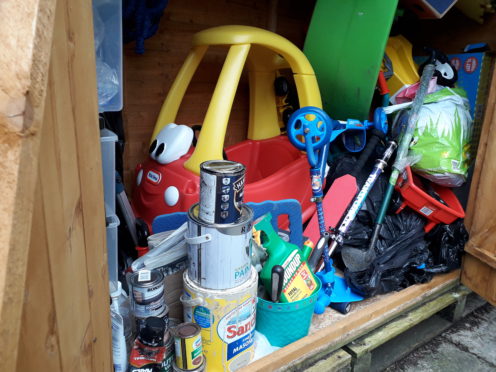I could see a pair of them lurking at the end of the supermarket checkout – another sign that the “Invasion of the Shed Men” is well underway.
Yes, they were “shedders” on the lookout for new recruits.
Men’s sheds are everywhere, aren’t they?
I stopped for a friendly chat with them and discovered that they were taking things to a new level by upgrading from a shed to two portable cabins to cope with demand.
A leaflet was pushed into my hands emblazoned with their rallying cry to arms and a warning to lonely hermits.
“Do you know a relative who needs to get out more?” it inquired.
A direct and friendly message which suggested that if you did, they were the people to call.
Had they said “Do you know someone who would like to go for a ride?” I would have wondered if the shed men were affiliated to the Mafia.
I shielded the message from my wife’s all-seeing eyes as she would have offered me up as a sacrifice without a second thought.
But there was something bothering me which I thought might bar me from being accepted as a suitable candidate to join the ranks.
The sad fact is that I can’t even get into my own shed (or garage for that matter) so what chance is there of getting into theirs?
When I open my shed door, which is only just holding the bulging contents in check, I have a split second to react as something comes crashing out.
I would love to potter about in it if only I could get in.
The problem is that my shed is crammed with my three grandsons’ burgeoning riding equipment – you name it, anything from small tractors to scooters.
They sit awkwardly alongside the usual debris which worms its way into unsuspecting sheds. An assortment of garden tools, leaky buckets, clogged paintbrushes which were never cleaned and bags of unopened bird food.
I look warily at a shiny litre bottle of unopened Roundup weedkiller a few feet away in a dark corner. I had just seen a news report of a US court awarding a couple a billion dollars over allegations that being exposed to Roundup gave them cancer.
The offending ingredient at issue is glyphosate. I scanned my bottle label. Yes, there it was – glyphosate acid and salt.
Makers Monsanto and parent Bayer deny the claims and are appealing against the judgement. US and UK health authorities say it is safe to use.
I decided to leave it where it was for the time being, but would I have discovered all this had I not been taking more interest in the world of sheds?
It is the same miserable picture in my garage, with lots of weird objects including boxes of magnifying glasses and some Russian dolls someone gave me at a car boot sale.
The gloomy scene is dominated by a tee-pee tent which remains fully assembled at all times in the garage in case my grandsons drop by and it needs setting up in our garden. I can hardly get in or out.
This stuff would make a new hoarders’ TV series.
The men’s shed phenomenon has grown out of Australia and is springing up all over Scotland with great success.
It bridges a gap between loneliness and health issues, while offering men an escape route to share skills through community work and companionship.
Perhaps no surprise that in some men’s sheds there are significant numbers of men with disabilities or isolation issues.
But not exclusively so – many able-bodied men can pass on or learn skills in an informal educational setting, too.
Are they filling a gap in community projects or healthcare which councils and NHS boards are failing to do through pressure on budgets? Possibly. But conversely it seems that the positive contribution to people’s lives which they are making – for both individual shedders and communities they help – is accepted in official circles and can qualify for financial support.
I was fascinated to discover that one of the two men involved in the men’s shed group I stumbled across in the supermarket was a GP.
He was an enthusiastic believer in their capacity to enrich the lives of men who feel isolated and cut off in their communities.
The threat to health is very real. He told me that research has shown that Men’s Shed members generally live longer than if they were alone and isolated with no purpose in life.
I must delve back into the 19th century to tell you about an illustrious shed man who was obviously way ahead of his time.
Sir Alexander Ogston, from Aberdeen, was an outstanding military surgeon and scientist who cared deeply about the treatment of wounded soldiers.
But what really marked him out was a piece of brilliance which changed the world and saved countless lives. He discovered and named the killer bacteria staphylococcus in the late 19th century.
And where did he do that? In a shed behind his home at 252, Union Street where he incubated and studied the mysterious and sinister grape-like bacteria.
Yes, his shed. The rest is history as they say.
Getting into the world of men’s sheds might not change the world, but it could easily change the way you look at the world.
David Knight is the long-serving former deputy editor of the Press and Journal

